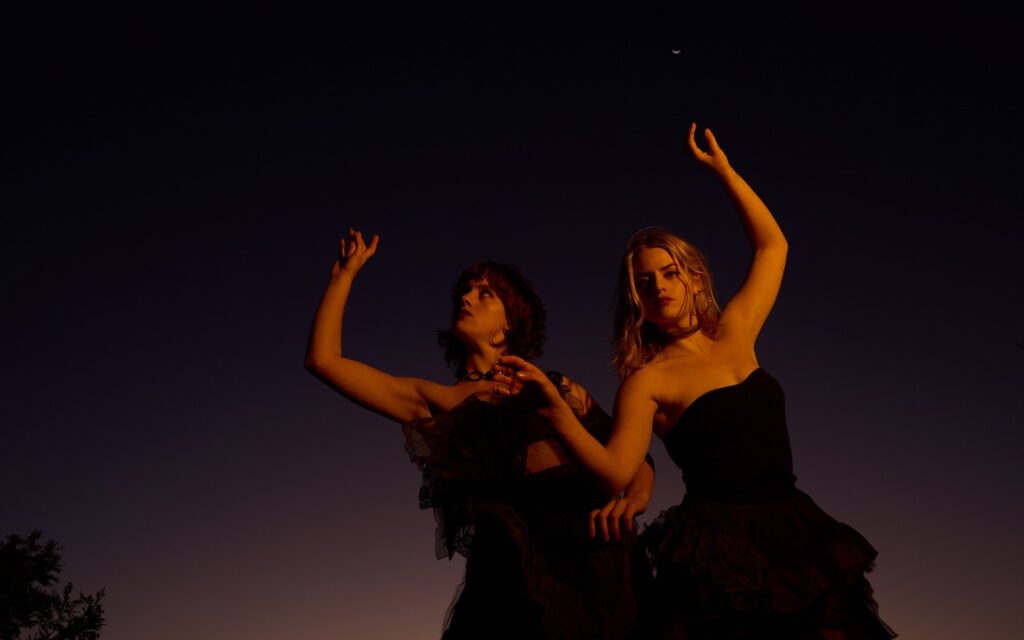Australian National Academy of Music (ANAM) is a tertiary institute, at least in a sense. However, the curriculum they deliver sets them apart from other musical training offered within the conventional model of tertiary education.
Within the institute, the musicians follow a rigorous program of regular performances. This year, the percussion department led by Peter Neville are celebrating their 10th anniversary. In commemoration, ANAM is hosting A Decade of Rhythm! A Republic of Sound on Friday April 28 at Rosina Auditorium, Abbotsford Convent. This show will act as the preliminary show in a three-part percussion focused series.
Peter Neville deliberately chooses to refer to students of ANAM as musicians in order to outline the professionalism ubiquitous at the institute.
Keep up with the latest music news, features, festivals, interviews and reviews here.
“It is a pretty full-on schedule for the musicians,” says Peter. “We don’t call them students; we call them musicians. It’s a bit of a distinction too, as ANAM is the stepping stone between education and the profession. I like to compare it to something like the Australian Institute of Sport.”
ANAM itself was only established in 1994 and the percussion department was introduced in 2013.
“The concert is part of a three-part series. The first one is the Republic of Sound, which is a pun on one of the pieces, called the Republic of Spaces. A large focus of this first concert is to bring back all of the alumni that are available. We have actually got 10 of the previous ANAM percussionists to join us, I think we have four that couldn’t make it.”
A Decade of Rhythm! A Republic of Sound will feature a selection of compositions both extracted from history and created specifically for the event, showcasing both historical and contemporary Australian and international composers.
“With this I wanted to include some historical pioneer’s works,” says Peter. “For example, the Charles Ives piece, which has never been done in Australia. I wanted to focus on the big important composers in the development of modern music.
“Ives basically builds up this enormous polyrhythm of 22 separate parts over about 15 minutes and then it dies back down to a single bell sound. It’s quite extraordinary for something that was conceived over a hundred years ago now. That complexity wasn’t explored in western music until decades and decades later.”
Although replicating a Charles Ives work that has 22 separate parts with only 14 percussionists is as difficult as it sounds, the most provoking and experimental component of the concert is a composition that will be led by Peter Neville and colleague Thea Rossen. Directly inspired by the experimental works of John Cage, Peter is still unsure as to how the composition will assume form.
“We are also going to invent a work, like a John Cage-type thing, where each of the percussionists will bring whatever they want to play or offer in a little box, such as a poem they want to read, a song they want to sing.”
“It will just be a set of instructions telling you how often to play, or how loud and what type of feeling to display. It will be quite open and abstract, much in the spirit of John Cage and the pieces he wrote. We will set our stopwatches on our phones and it will go for around 10-15 minutes. We may talk and walk it through a little bit, but not rehearse it as such, so it is totally surprising and fresh on the night. I think it will be wonderful.
“After setting up their stopwatch, the musicians just follow what it says on the card, which might just say ‘play once every minute’. It might say ‘come in with a very loud sound at four minutes and 33 seconds’ – another pun on John Cage.”
What’s more, A Decade of Rhythm! A Republic of Sound will mainly feature untuned instruments. There will be exceptions made for certain compositions, but instruments will be played in experimental ways, an explorative approach to percussion that Peter Neville refers to as post-performance practice.
“The first concert is a lot of untuned instruments,” says Peter. “Although, in the Grainger one, we do feature what he called ‘tuneful percussion’. Percy Grainger was really important for introducing all of the tuned or mallet percussion into the orchestra.
“The piano in this piece is played from the inside with mallets. The Henry Cowell piece also has the percussionist playing piano but they’re muting the strings with one hand. Part of this concert involves percussionists playing the piano in unusual ways. The whole movement we are focusing on is called post-performance practice.”
The concert will ensure a night of ground-breaking and trail-blazing percussive techniques. If this sounds alluring, you will not be disappointed.
Tickets to the innovative show A Decade of Rhythm! A Republic of Sound on Friday April 28 at Rosina Auditorium, Abbotsford Convet can be found here.







